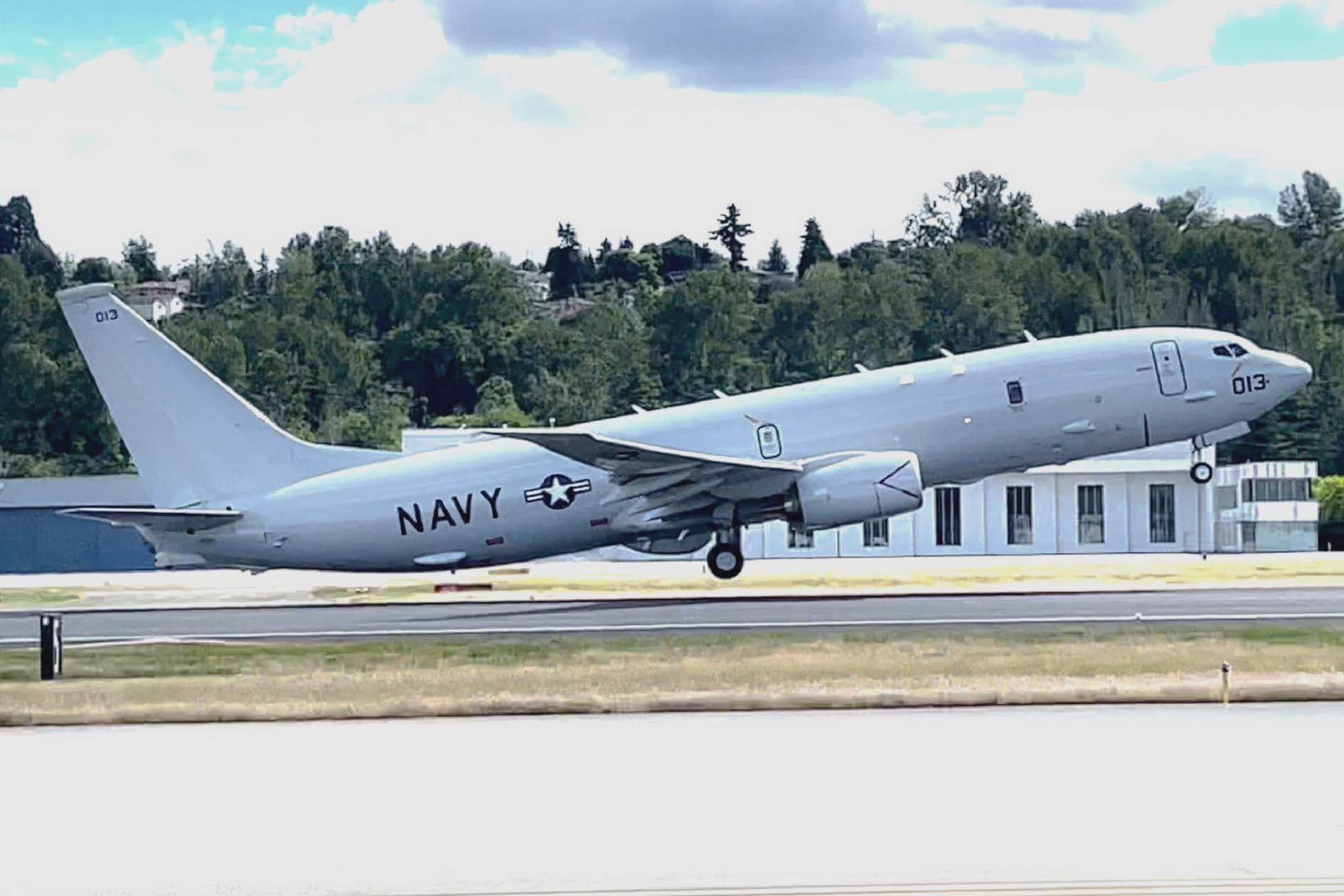Aerospace
Boeing Delivers 150th P-8 Maritime Patrol Aircraft.

The 150th P-8 aircraft to be delivered, a Boeing P-8 maritime patrol and reconnaissance aircraft, took to the skies above Puget Sound. Air Test and Evaluation Squadron (VX) One, headquartered at Naval Air Station Patuxent River in Maryland, will fly the 150th multi-mission P-8.
According to Stu Voboril, vice president and programme manager of P-8 Programs, “there are currently 150 P-8s around the world offering assurance and an unrivalled capability to our global customers.” Delivering the best maritime patrol aircraft in the world has been and will continue to be our main priority.
The global P-8 fleet consists of 112 aircraft given to the US Navy, 12 to Australia, 12 to India, nine to the UK, and five to Norway, and has logged more than 450,000 hours of accident-free flight time. The planes are made for anti-surface warfare, anti-submarine warfare, intelligence, surveillance, and reconnaissance, as well as search and rescue missions.
Six test aircraft that were sent to the U.S. Navy in the early stages of the programme are not counted among the 150 P-8s currently in service. For the purpose of evaluating their capabilities and performance, Boeing tested those aircraft during development. The test aircraft play a vital part in ensuring that Boeing continues to offer cutting-edge capabilities to international P-8 clients as system improvements and new technology are developed.
Boeing, a global aerospace leader, develops, manufactures, and services commercial aeroplanes, defence products, and space systems for customers in over 150 countries. As a top US exporter, the company leverages the talents of a global supplier base to advance economic opportunity, sustainability, and community impact. Boeing’s diverse team is dedicated to innovating for the future, leading with sustainability, and cultivating a culture based on the company’s core values of safety, quality, and integrity.

Aerospace
Boeing Transfers Rocket Stage to NASA, Paving Way for Human Moon Mission

Boeing has achieved a significant milestone by providing NASA with the second core stage of the Space Launch System (SLS) rocket.
This crucial component, crafted at NASA’s Michoud Assembly Facility (MAF), is set to propel the Artemis II crew into lunar orbit, marking humanity’s return to deep space after a 50-year hiatus.
The monumental Boeing-built rocket stage, the largest element of the Artemis II mission, will embark on a journey aboard the Pegasus barge, traveling 900 miles to NASA’s Kennedy Space Center.
Comparison of two legendary aircraft B777x vs B747 aircraft:Click here
Upon arrival, it will be meticulously integrated with other essential Artemis II components, including the upper stage, solid rocket boosters, and NASA’s Orion spacecraft within the iconic Vehicle Assembly Building. This intricate integration process is a vital step toward the eagerly anticipated Artemis II launch, slated for 2025.
“Boeing-built products helped land humankind on the moon in 1969, and we’re proud to continue that legacy through the Artemis generation,” remarked Dave Dutcher, vice president and program manager for Boeing’s SLS program. “Together, with NASA and our industry partners and suppliers, we are building the world’s most capable rocket and paving the way to deep space through America’s rocket factory in New Orleans.”
NASA, Lockheed Martin Reveal X-59 Quiet Supersonic Aircraft:Click here
The delivery of Core Stage 2 marks a significant achievement in the evolution of the SLS rocket. Towering over 200 feet and powered by four RS-25 engines, this core stage, coupled with two solid-fueled booster rockets, will generate a staggering 8.8 million pounds of thrust. This immense power is crucial to launching Artemis II and future missions into the vast expanse of space.
The SLS rocket stands unparalleled in its capability to transport both crew and substantial cargo to the moon and beyond in a single launch. Its extraordinary capacity will facilitate the delivery of human-rated spacecraft, habitats, and scientific missions to destinations including the moon and Mars, ushering in a new era of space exploration.
-

 Travel1 week ago
Travel1 week agoAir India to Expand US Operations with Three New Routes After a Decade
-

 Travel2 weeks ago
Travel2 weeks agoWhy We Should Avoid These Stamps in a Passport
-

 Airlines1 month ago
Airlines1 month agoInvestigations Reveal Fake Chinese Titanium in Boeing and Airbus Jets
-

 Tech4 weeks ago
Tech4 weeks agoChina’s CATL Plans 1,800-Mile Electric Plane Launch by 2027
-

 Airport3 days ago
Airport3 days agoTop 10 Largest Airports in the World by Size
-

 Aerospace4 weeks ago
Aerospace4 weeks agoChina’s Fighter Jets Turn Wings into Autonomous Drones
-

 Airlines4 days ago
Airlines4 days agoAir India Rolls Out A350s for Delhi-New York JFK and Newark Routes
-

 Defence3 weeks ago
Defence3 weeks agoBoeing Enhances Chinook with New Engines and Block II Upgrades at $96 Million







